Guest BlogsWhat It Takes to Train For Nazarè

Praia do Norte is a remarkable place, particularly for a photographer who wants to capture the full force of the nature. It’s also the right place if you are a busker singing anthems about nature to amuse the visitors of Fort of São Miguel Arcanjo, or a curious tourist wondering what all the fuss is about big waves. In fact, this is a legendary surf spot that attracts surfers from all over the world. The wave’s reputation has grown quickly since 2011, when big wave icon Gareth McNamara surfed a world record (at the time) 78 foot monster. The uniquely large waves that break here are created by big swells that are focused along an underwater canyon (about 140 miles long and with a maximum depth of 16,407ft) that ends just out front of Praia do Norte.
It’s one of the most challenging surf spots in the world, characterised by large and unpredictable waves. It’s where the best big wave surfers find their limits and they try to push them; where they reveal their character. The main season for big waves runs from November through March, and when a huge swell hits this otherwise quiet small fishing town becomes a focus of the surf world.

I had the chance to take a behind the scenes look into a three day long big-wave training session last December attended by a lot of the regular big-wave surfers who regularly visit Praia do Norte, during the waiting period for the WSL Big Wave World Tour event. It wasn’t only the pros who went out to gain confidence in these unpredictable waters, but also some of the watermen who are committing their time to becoming specialists at this spot. It was amazing to watch, and even better to share this experience with some of them.
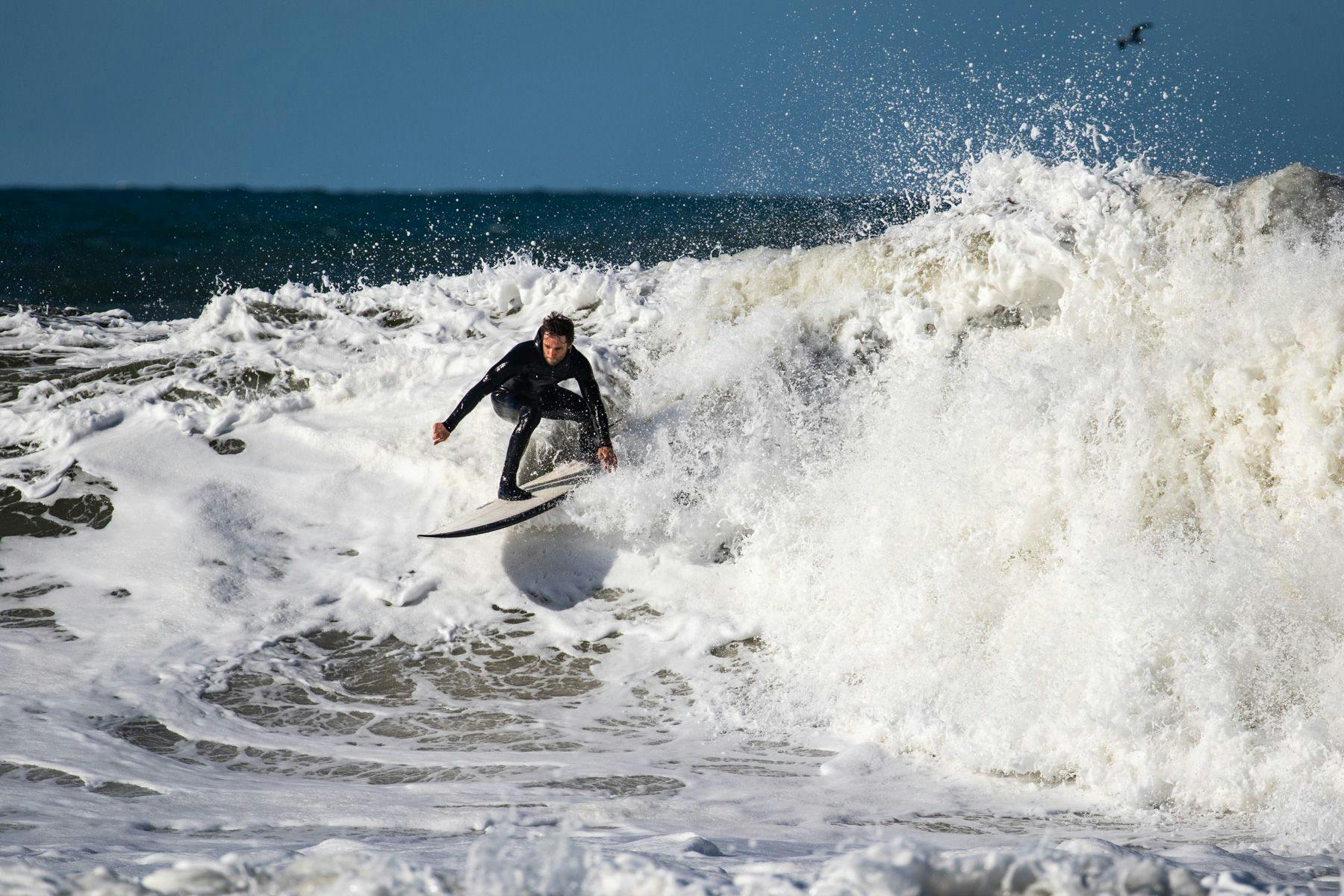
Freddy Olander
Freddy Olander is a 35 year old German surf coach. “I grew up in Berlin, I started surfing at the age of 13 and from then on I have dedicated my whole life to it”, he told me after a good training session. “Surfing in Nazarè makes me forget everything else around me. I am solely focused on surfing and nature” he added with a huge smile on his face. I was interested in knowing why he chose to become a big wave surfer? A lot of the general public label these athletes as crazy, but it’s a very shallow definition: There’s much more to it than that. “I always loved the big incoming sets of waves and the mixture of emotions when you drop into a big wave and surf it down the line. Over the years and with more experience, you always want bigger waves. It’s how I get the most happiness out of my life, so that’s simply the reason why I am a big wave surfer”.
Kalani Lattanzi
Happiness is a very recurring theme in the surfers’ personal stories. Freddy shares it with Kalani Lattanzi, a Hawaiian born and Brazilian raised surfer, bodyborder, bodysurfer and jet-ski driver. Similar to Olander, Kalani fell in love with the water at the young age of 12, with the perk of living with the ocean on his doorstep. “I feel blessed to be in the water getting waves, that’s a dream life”, he stated without hesitation. “Nazarè can generate a wide range of emotion,” he added, “happiness, adrenaline, anxiety”. I’ve witnessed with my own eyes Kalani’s unconditional love for the water. One morning during the training camp, for a long stretch of time, he was the only one out. He started with his surfboard, then he rushed back to the beach to grab his handplane and he immediately swam back to face the waves, tireless, with a happy smile spread across his face. He trains this way, surfing, bodysurfing, hand-planing and stretching.

“My secret” he told me “is to keep my body and mind safe, training for different sports and eating a healthy diet”. Kalani is, to me, one of the most intriguing figures of the surf world right now. It’s crystal clear from the first time you meet him that his life is completely dedicated to the water. In his native Hawaiian language means “A gift from heaven” and he’s willing to take the most out of it. Lately, his story has been the subject of a documentary that carries his name, focused on his experience in the cold waters of Nazarè.
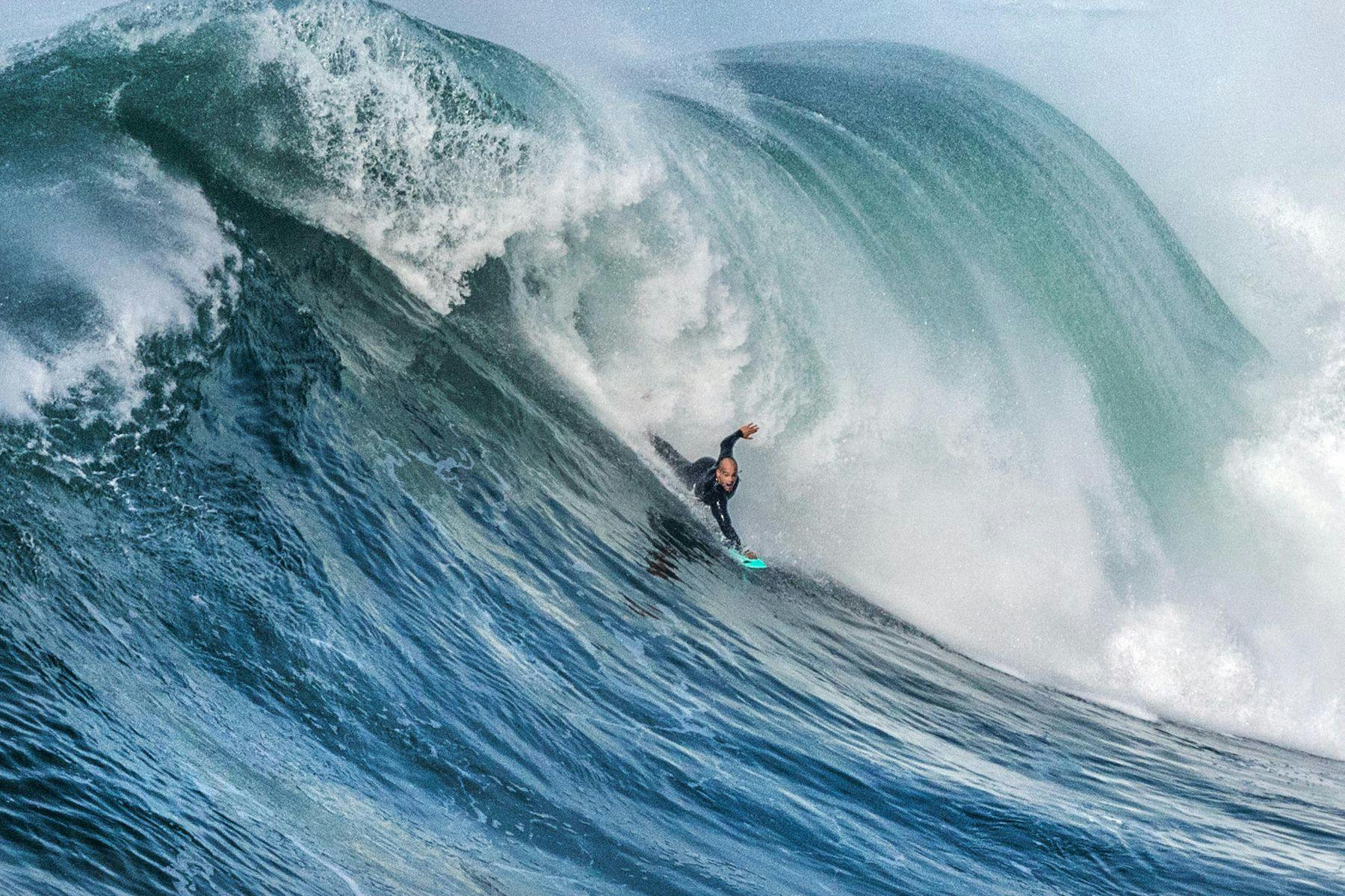
As described by Freddy, “Nazarè, with its size, power, shifting peaks and the continually changing conditions, makes for the biggest challenge of my life”.
“You can´t be trained and prepared enough for big wave surfing”, said Freddy, who like Kalani is used to training using a variety of different sports “body workouts, yoga, muay thai, swimming, apnea training,” in order to be as ready as possible. “Becoming comfortable when surfing Nazarè comes with training and familiarity. So the more that I train in Nazarè, the more familiar I am with all the different conditions and I can focus on paddling into the biggest waves”. Confidence grows with experience.
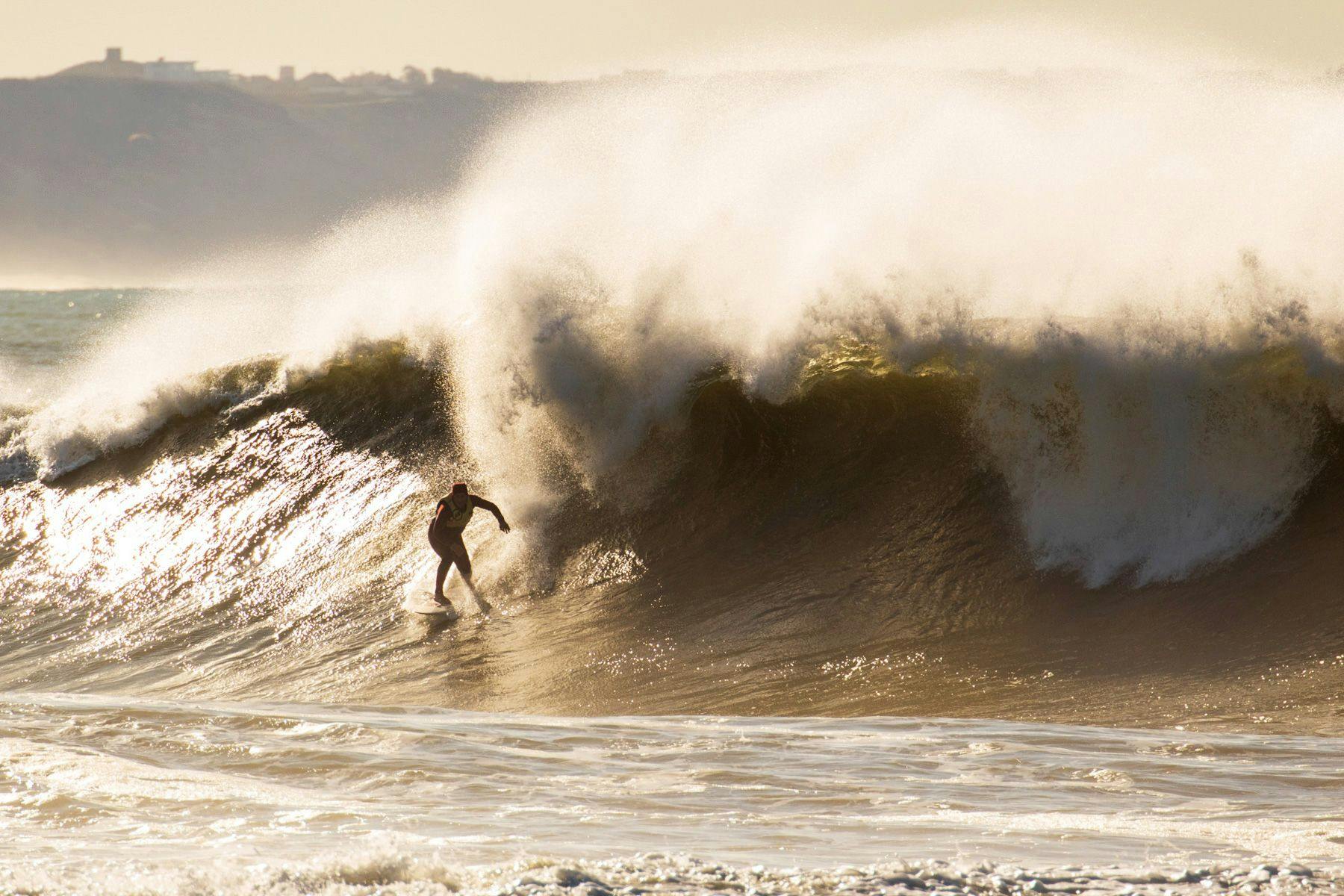
Edilson Luis da Assunção
Experience is something that, without a doubt, Edilson Luis da Assunção has an abundance of. Don’t worry though if this name doesn’t immediately ring any bells with you – you might know him better as “Alemao de Maresias”. His nickname comes from his white skin and blonde hair (Alemeao means German, in Portuguese) and Maresias, a beach district in the city of San Sabastiao, located on the northern coastline of San Paulo state, Brazil. Maresias is where Alemao started his journey into the world of surfing in the early 80s. “Back in those days there weren’t jet-ski assists, or buoyancy vests. The boards were bigger and heavier, and we didn’t have any proper equipment to surf big waves. I had to rely only on my good arms and lungs to paddle out. It was essential to maintain the right mindset for reading the ocean and not end up getting pounded or drowned”.
After he gained good experience at the difficult beach break of Maresias (where 2x World Champion Gabriel Medina started his amazing career), Alemao travelled all over the world. He surfed the most famous spots in Indonesia, Australia, Hawaii and Easter Island. “All these different experiences I had, all the knowledge I gained, allow me to surf the way I do right now”.
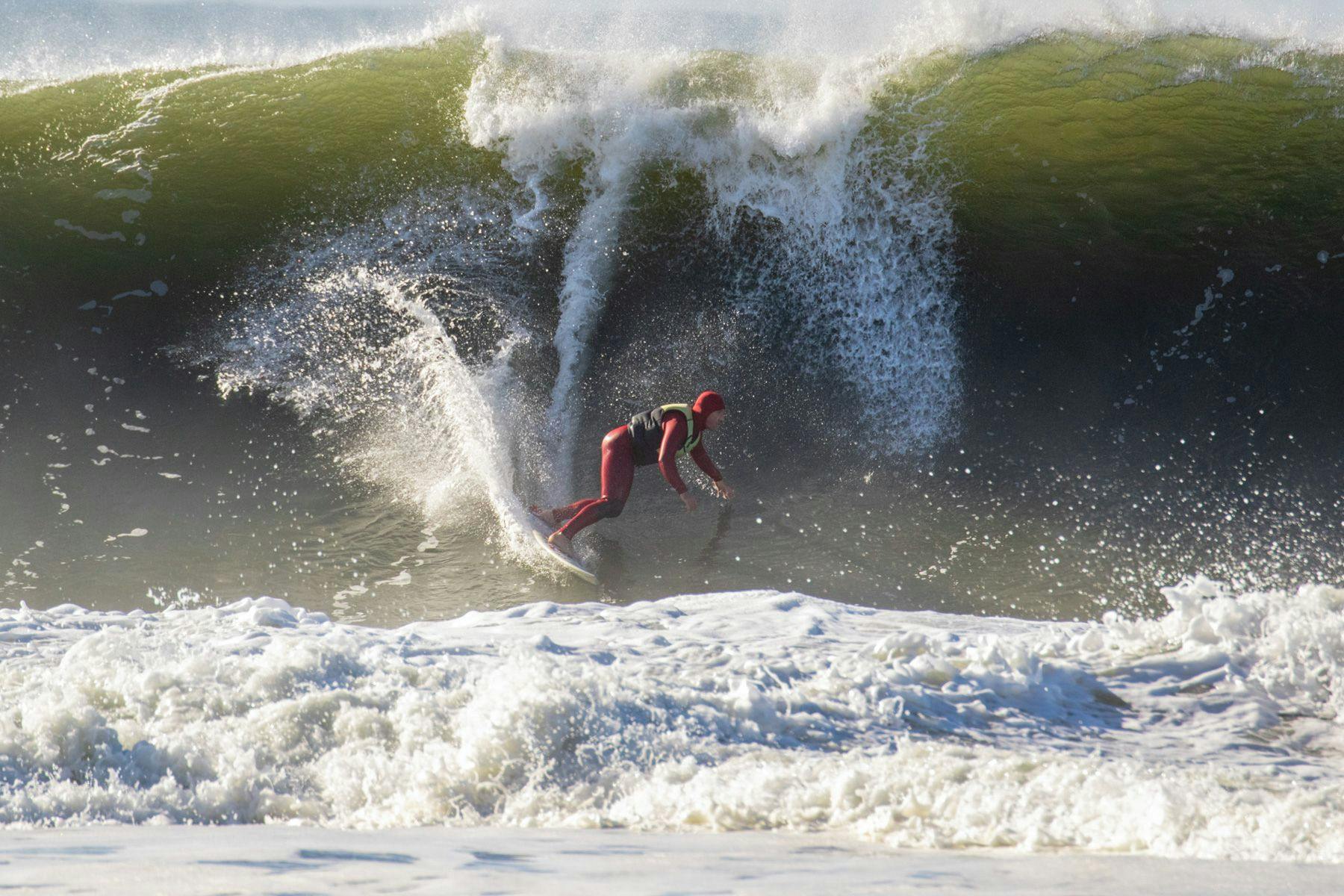
“Nazarè is a special place. I try to keep myself connected with the natural environment, and I try to control my emotions and feelings. It’s a spiritual thing. At the beginning of my career I had a hard time understanding it, but I completely get it now. When I jump from the land into the water I move into another world and I want to be connected with it as much as I can. Otherwise I couldn’t get the most out of this bond, and I could miss some waves and some opportunities . The ocean is a spiritual place. You cannot control it. We, as surfers, just like the captains of the ships that crossed the sea, have to cross the shore break to line-up and respect the ocean and its force. I usually say a quick prayer, that helps me connect with the universe, so I can go out and surf the best that I can or drive a jet-ski the best that I can in order to put my friends in the best possible position to surf at the top of their potential or to save them if something goes wrong” (Alemao was directly involved in the rescue of surfer Alex Botelho during the Tow Surfing Challenge in February).
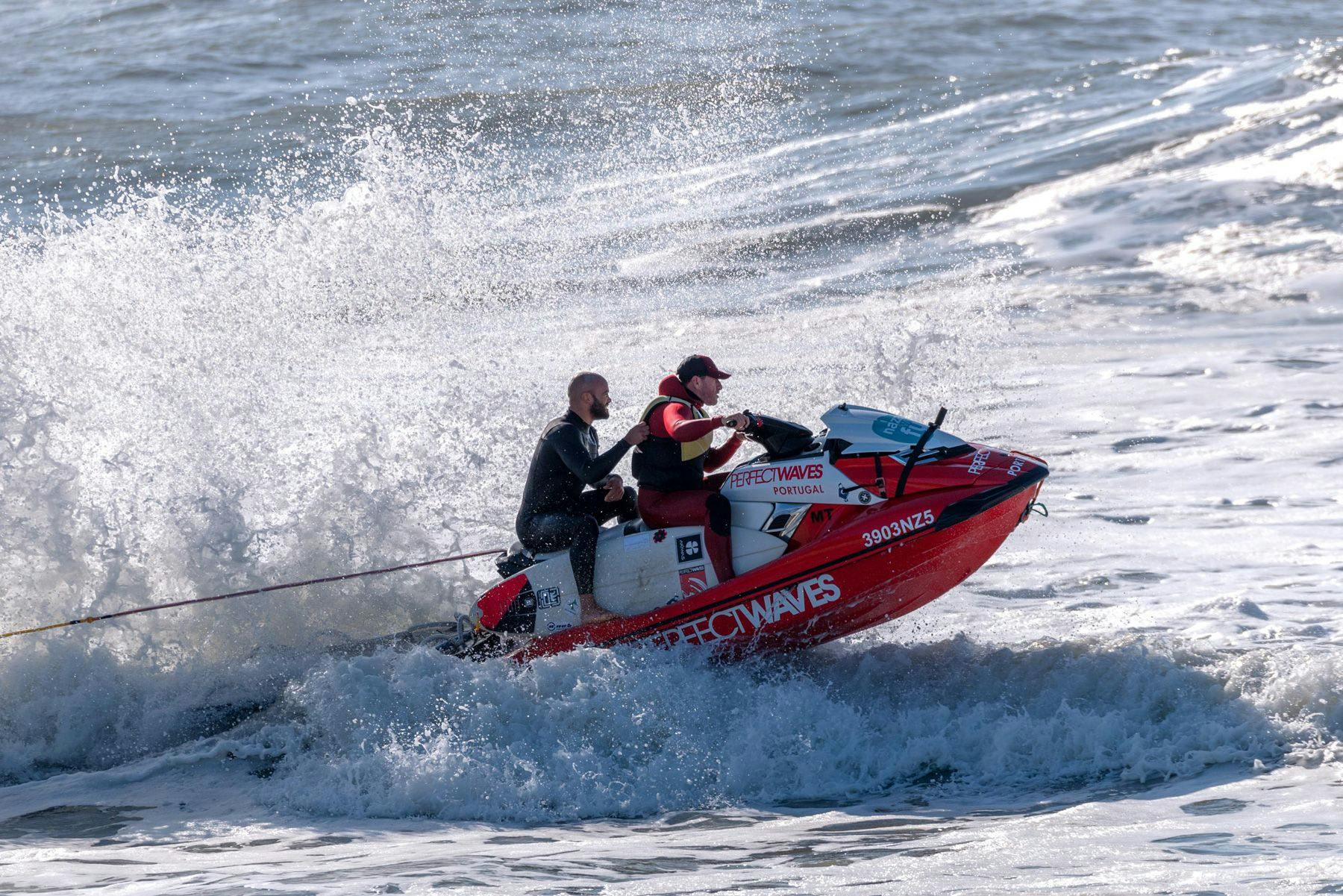
Over the past six years Alemao has teamed up, as jet-ski driver, with some of the most prominent surfers to tackle the waves at Praia do Norte, icluding Carlos Burle, Lucas Chumbo, Maya Gabiera, Rodrigo Koxa, and Kalani Lattanzi. “For each one of them there’s a different way of driving. Everyone calls me the captain, and like a captain I have to put them in the right spot at the right time to enable them to catch the best wave. I’ve been working with a lot of surfers, not only professionals but also dedicated newcomers. I have developed a connection with them through talking, working together, and with a lot of mutual respect. This allows me to develop different ways of reading the ocean and to choose the best waves for each kind of surfer. If the surfers believe in me and I believe in them then we can perform our best. I want them to be happy. If they are, I’m happy too”.
Happiness, mutual respect, a deep trust in each other, and love and respect for nature are common feelings that these athletes share and spread. Whether the rest of us are training to surf big waves or not, developing these attributes is something we should probably all be working on right now.